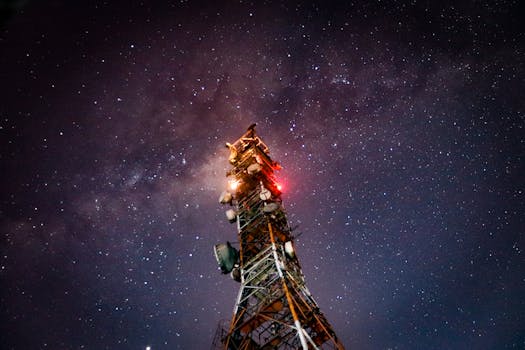
Starlink: Revolutionizing Global Internet Connectivity with Satellite Technology
Starlink, the Focus Keyword, is a satellite constellation developed by SpaceX, a private aerospace manufacturer and space transport services company founded by Elon Musk. The primary objective of Starlink is to provide high-speed, low-latency internet connectivity worldwide, bridging the digital divide and transforming the way we communicate. With its advanced satellite technology, Starlink aims to offer fast, reliable, and affordable internet services to underserved communities, remote areas, and even moving vehicles.
The concept of Starlink was first announced in 2015, and since then, SpaceX has been working tirelessly to develop and launch a network of low-Earth orbit (LEO) satellites. The constellation is designed to consist of nearly 12,000 satellites, each weighing around 260 kg, orbiting the Earth at an altitude of approximately 550 kilometers. The satellites are equipped with advanced Hall effect thrusters, which enable them to maintain their position and altitude, ensuring a stable and efficient network.
How Starlink Works
Starlink uses a combination of advanced technologies to provide high-speed internet connectivity. The satellites are equipped with phased array antennas, which allow them to communicate with each other and with ground stations. The phased array technology enables the satellites to steer and shape their beams, ensuring efficient and reliable communication. The satellites also use advanced laser communication systems, which enable them to communicate with each other at high speeds, reducing latency and increasing the overall network performance.
When a user requests internet access, their device sends a signal to the nearest Starlink satellite, which then forwards the request to the nearest ground station. The ground station then connects the user to the internet, providing them with high-speed, low-latency access. The entire process happens in a matter of milliseconds, making it possible to stream high-definition videos, play online games, and engage in other bandwidth-intensive activities.
Benefits and Applications of Starlink
Starlink has the potential to revolutionize the way we communicate, providing numerous benefits and applications. One of the primary advantages of Starlink is its ability to provide internet connectivity to underserved communities, remote areas, and developing countries. This can help bridge the digital divide, enabling people to access essential services, education, and economic opportunities. Starlink can also provide backup connectivity during natural disasters, outages, or other emergencies, ensuring that critical communication services remain available.
Starlink can also be used to provide internet connectivity to moving vehicles, such as cars, buses, trains, and airplanes. This can enable passengers to stay connected, work, or entertain themselves during their journeys. Additionally, Starlink can be used to provide connectivity to ships, boats, and other marine vessels, enabling them to stay in touch with the mainland and receive critical weather updates, navigation information, and other essential services.
Challenges and Future Developments
While Starlink has the potential to revolutionize global internet connectivity, it also faces several challenges and limitations. One of the primary concerns is the risk of space debris, as the large number of satellites in the constellation can increase the risk of collisions and other accidents. SpaceX is working to mitigate this risk by designing its satellites to de-orbit and burn up in the atmosphere at the end of their life, reducing the amount of space debris.
Another challenge facing Starlink is the need for regulatory approvals and compliance with international laws and regulations. SpaceX is working with governments, regulatory bodies, and industry stakeholders to ensure that Starlink complies with all relevant regulations and standards. The company is also investing in research and development, aiming to improve the performance, efficiency, and sustainability of its satellites and network.
